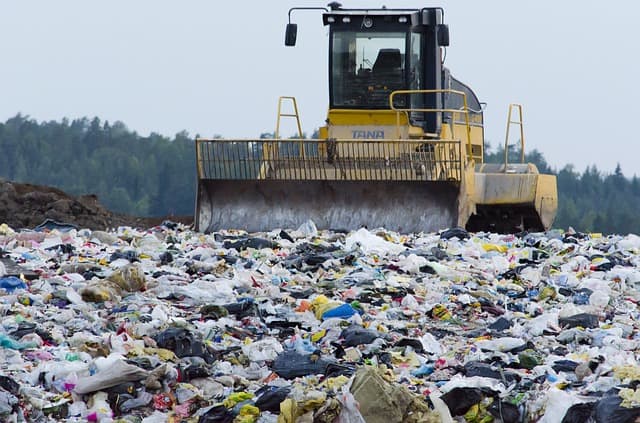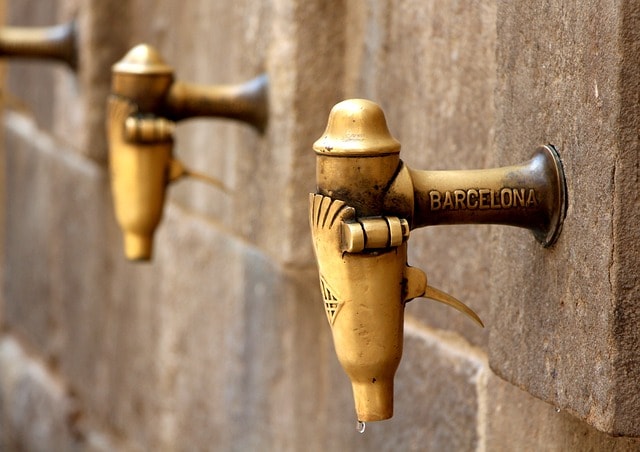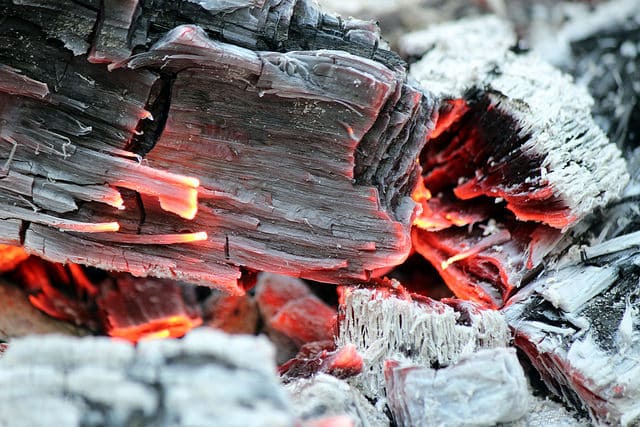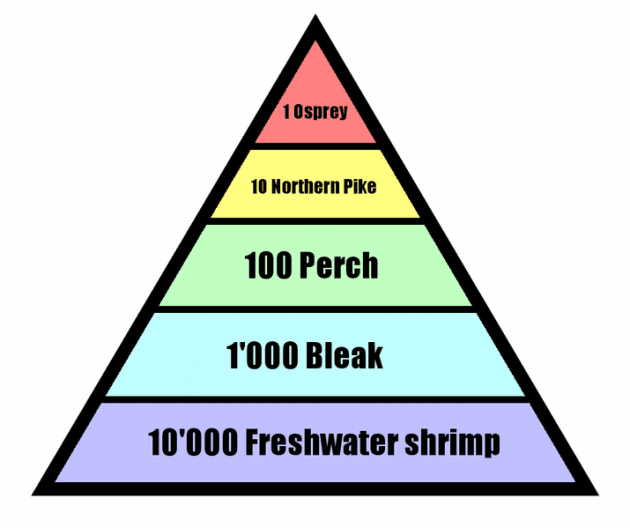Types and Solutions of Land Pollution

Land pollution is one of the main types of pollution hurting the earth. It refers to the destruction or degradation of earth’s surface, directly or indirectly due to anthropogenic activities.
Any activity that undermines the quality or productivity of the land as a suitable place for agriculture, wildlife, construction, forestation, etc. falls under land pollution.
While there are many causes of land pollution, industrialization is the major culprit. In this article, we explore the major types of land pollution and some of the mitigation measures for land pollution.
Let’s dive in.
Major Types of Land Pollution
There are numerous reasons and causes of land pollution, but the following 5 pose the most adverse effects to various life forms on earth.
1. Agricultural Land Pollution
We use a lot of fertilizers as well as pesticides, fungicides, and insecticides on our agricultural land in a bid to maximize yields.
These agricultural inputs are all loaded with chemicals. The chemicals are effective in killing the pests and increasing production. But they also strip the soil of its minerals and other valuable compounds.
Moreover, they are harmful to animals, fish, birds, and useful microbes. In fact, some of the herbicides we use to eradicate weeds are so harmful that they can be deadly even when used in small amounts.
2. Non-biodegradable Solid Waste
There is a lot of waste that is generated in our homes, schools, hospitals, shops, and even workplaces. Most of this waste is non-biodegradable. It can take up to millions of years to decompose completely.
Non-biodegradable solid waste includes metal, glass, and plastic products. This waste finds its way to the dumping areas, which in turn results in landfills. Plastic products are especially the most notorious.
They pile up over time and it becomes very difficult to eliminate them.
3. Industrial Waste
Another major source of land pollution is industrial wastes. These wastes include the following:
- Chemicals
- Plastics
- Metals
- Paints
- Other industrial manufacturing byproducts and residues.
Industrial wastes are normally generated from agricultural produce processors, oil refineries, pharmaceuticals, construction sites, and energy producing power plants.
For example, power plants release chemical wastes and dispose them in landfills. These include coal, petroleum, and nuclear wastes. Construction sites, on the other hand, produce wood, metal, and plastic wastes, which make their way into landfills.
While energy producing plants burn fossil fuels and biomass, other industrial producers like oil refineries and pharmaceuticals use various raw materials that generate loads of chemical residues and byproducts. And despite the fact that the disposal of industrial products is largely regulated, some of the waste still end up in the landfills.
4. Deforestation
Land degradation and pollution also occur when we cut down trees to clear land for agriculture, construction, mining or other economic activities.
Deforestation leads to the total loss of the land’s value. Elimination of natural vegetation disrupts the ecosystem, adversely affecting various life forms.
Take forest areas, for example; trees absorb 20 percent of the heat from the sun’s radiation. In so doing, it protects and conserves the surface soils from detrimental degradation.
When you cut trees, you expose the earth’s surface to the sun’s intense heat and other harmful elements. This, in turn, leads to land pollution, soil degradation, and desertification.
5. Mining
The extraction of materials and ores from under the Earth’s surface also contributes to land pollution. You know how that happens?
Mining degrades the quality of land. These include the extraction of metals, oil, coal, stones, stand, and mineral ores such as gold. When mining or quarrying, you normally have to clear the land surface and drill huge manholes and pits.
After mining, we leave the land completely defaced and exposed to erosion, which further whittles down its quality and value.
Fortunately, there are several things that can be done to avert land pollution and its detrimental effects. Shall we look at some of the solutions to land pollution?
Solutions for Land Pollution
When it comes to dealing with the land pollution menace, the three ‘Rs’ – Reduce, Reuse, and Recycle – have always be given prominence.
Even governments and organizations across the globe advocate for them. But what exactly do they mean?
1. Reduce
In the spirit of curbing land pollution, you should reduce the use of non-biodegradable products. This is one of the easiest land pollution solutions to implement.
For example, you can carry reusable bags with you when you go out shopping. In this way, you won’t need a plastic carry bag from the shop.
Likewise, use biodegradable materials wherever possible. And replace plastic products with metal or glass ones.
2. Reuse
You should avoid throwing things that can be reused. Why should you even buy new stuff when you can reuse the existing ones?
For example, you can use cardboard and plastic containers for other purposes. This is a great way to save some money.
And if you can’t find any good use for them, sell them for recycling instead of throwing them away haphazardly. Selling the unwanted stuff for recycling is another way of minting some extra cash.
3. Recycle
Recycling is one of the best solutions for land pollution. In fact, the European Union projects that their recycling rate target for the UK would have reached at least 50% by 2020.
And achieving the target just calls for the stepping up of recycling efforts in a bid to reduce the amount of waste being dumped into the landfills.
Besides reducing the amount of wastes in the landfills, recycling also plays an integral role in curbing the disposal of non-biodegradable waste on the Earth’s surface.
Moreover, it helps in minimizing other forms of pollution, such as air and water pollution. It also results in cost savings and conservation of energy resources.
Besides the three ‘R’s’, other effective solutions for land pollution include the following:
4. Proper Waste Disposal
Poor waste disposal is one of the major causes of land pollution. Hence, proper waste disposal is one of the effective ways of curbing land pollution.
This especially applies to the disposal of toxic waste products. It is imperative that industries follow the regulations guiding waste disposal.
5. Integrated Pest Management
The United States Environmental Protection Agency (EPA) lists Agriculture as one of the major contributors to land pollution. And this occurs largely through pesticides.
In light of that, farmers are advised to reduce the use of pesticides and embrace Integrated Pest Management (IPM). But what is IPM?
IPM involves using non-pesticide techniques such as crop rotation to eradicate pests. Namely, you should plant crops in alternate years. If you plant beans this year, for instance, then consider planting corn next year.
In that way, pests specific to beans will not attack your corn. They will starve and eventually die. Without the use of pesticide, you will be able to reduce land pollution.
Bottom Line
Land pollution is a serious global issue today. It has adverse effects on human and other life forms around the world. It is caused largely by human activities such as agriculture, mining, industrialization, deforestation, and improper disposal of non-biodegradable domestic waste. Fortunately, there are numerous measures that can be taken to curb land pollution. And these include reducing the use of non-biodegradable materials, reusing materials, and recycling various products.
Photo by: pixabay






